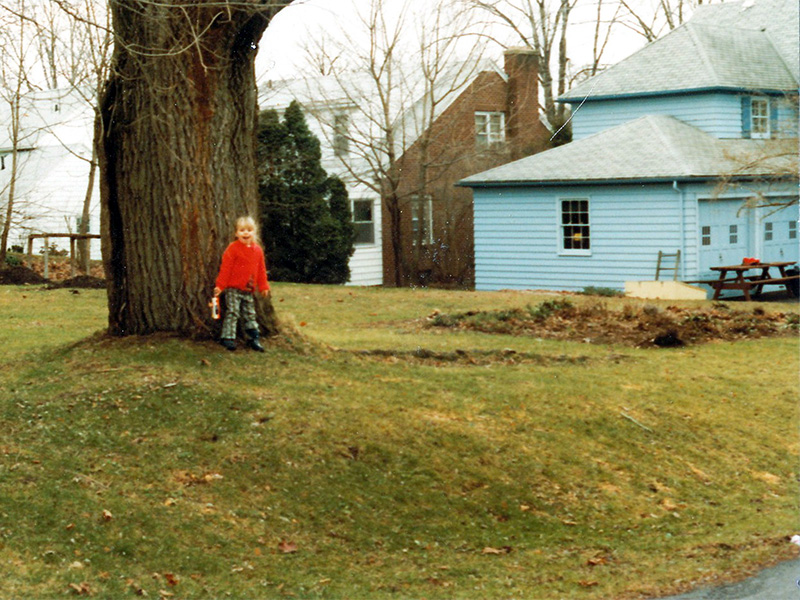
When we bought our house, there was a huge weeping willow (which is NOT a native willow) in the back yard, but it fell down soon after we moved in, so we had something of a blank slate.
This is in the area of our current edible garden and of our hedgerow.
Since we are on a corner property along a public street and since this was in the heyday of people being paranoid about children being stolen, we soon fenced in the back yard. We did not yet understand that the only place a child or a dog does NOT want to be is … inside a fenced area. Even so, we’re still happy we have our back yard fenced in.
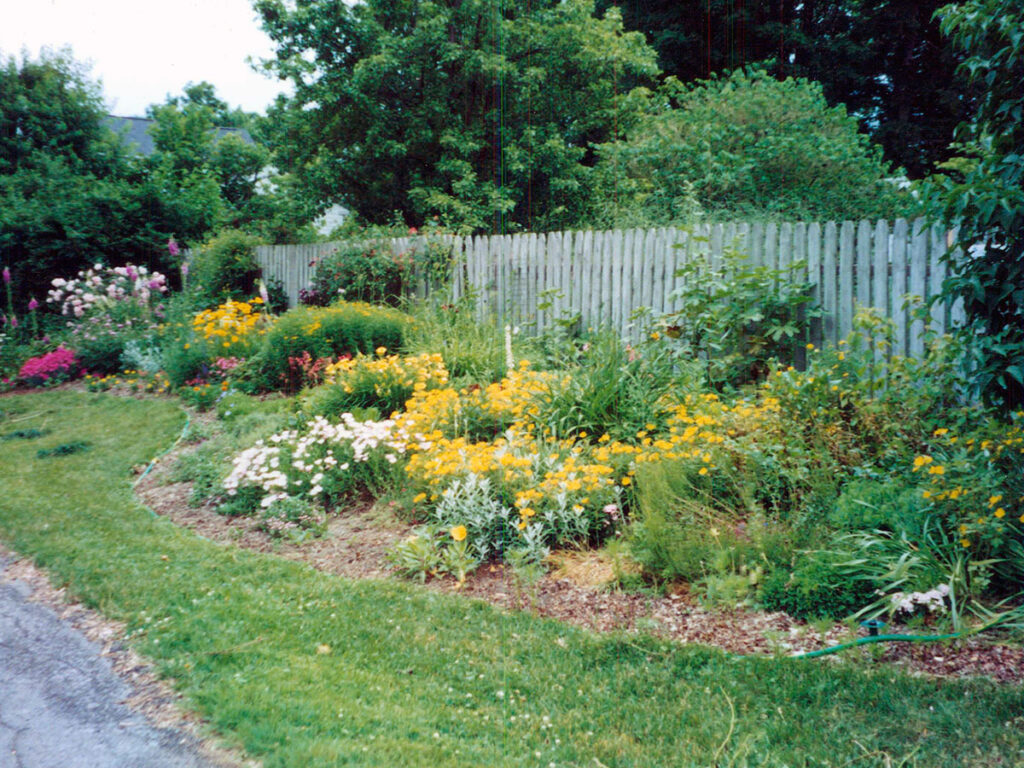
Before creating our habitat garden, we had an ornamental flower bed along the fence, with lawn running from the flower bed down to the road. It was a who’s who of typical non-native ornamental plantings: sweet alyssum, daylilies, forsythia, lilac, marigolds, pansies etc. etc. After learning about the importance of shrubs not just for birds, but for other wildlife, we decided to create a hedgerow.
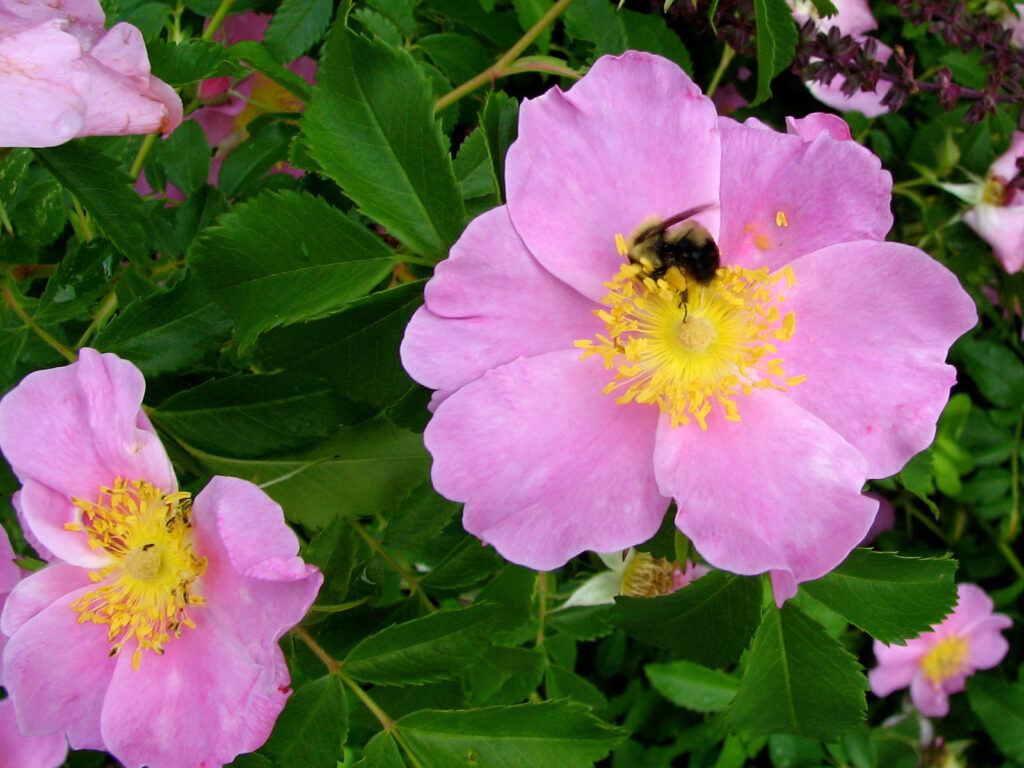
We planted shrubs, which provide nectar, for berries, for cover, and for raising young. Most of the shrubs that provide berries also provide nectar when they’re flowering in the spring. Some of the more dense shrubbery provides cover and nest areas.
We also planted some evergreens (Arborvitae) and some thorny shrubs — the native roses Rosa carolina and R. virginiana. Although the thorns can be annoying while working in the hedgerow, they’re helpful to birds since they keep some predators out of the area. UPDATE: We decided to (try to) remove the Carolina rose since it’s just too thorny and spreads quite a bit. We’re trying to keep the R. virginiana, but it isn’t doing very well.
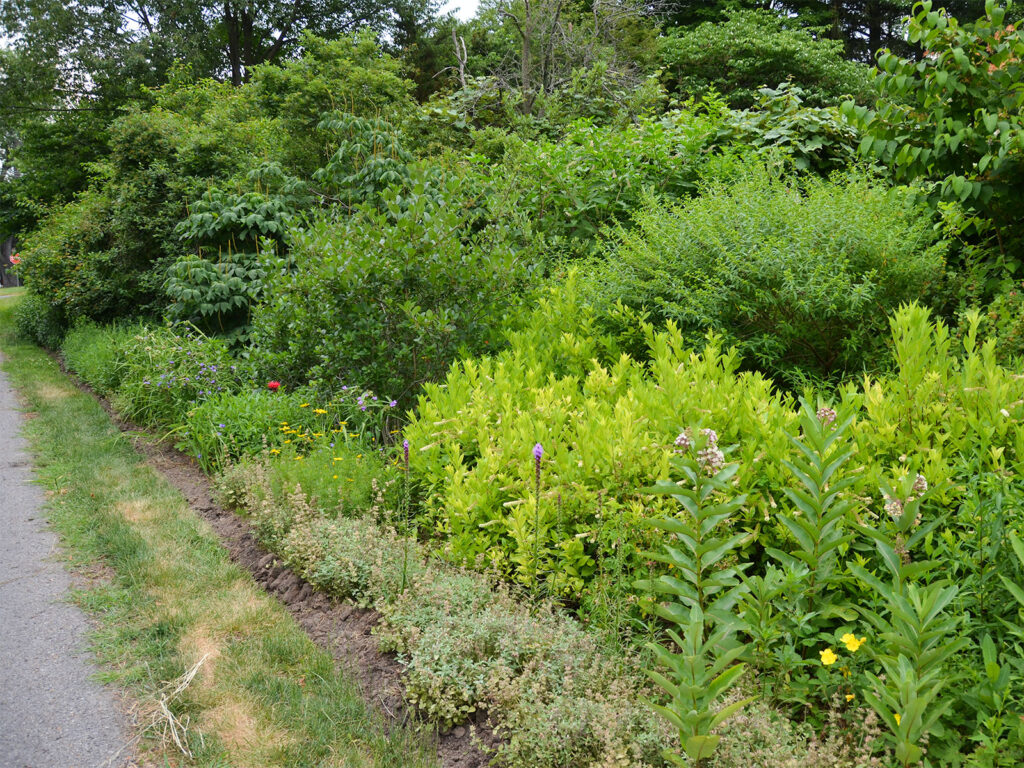
This is the hedgerow in early summer after the shrubs have stopped blooming and before many wildflowers are doing much. It’s a favorite spot, though, for birds!
We’ve struggled to create a strip of decent lawn as a border, but it has been difficult. Believe or not, a few years before, as part of a county-wide Save the Rain project, they NARROWED the road on our street, so we’re trying to grow lawn on what had been roadbed. We still dig up bits of asphalt, and the soil is poor to say the least. We’ve decided to just keep a neat edge and hope that short green weeds can fill the strip.
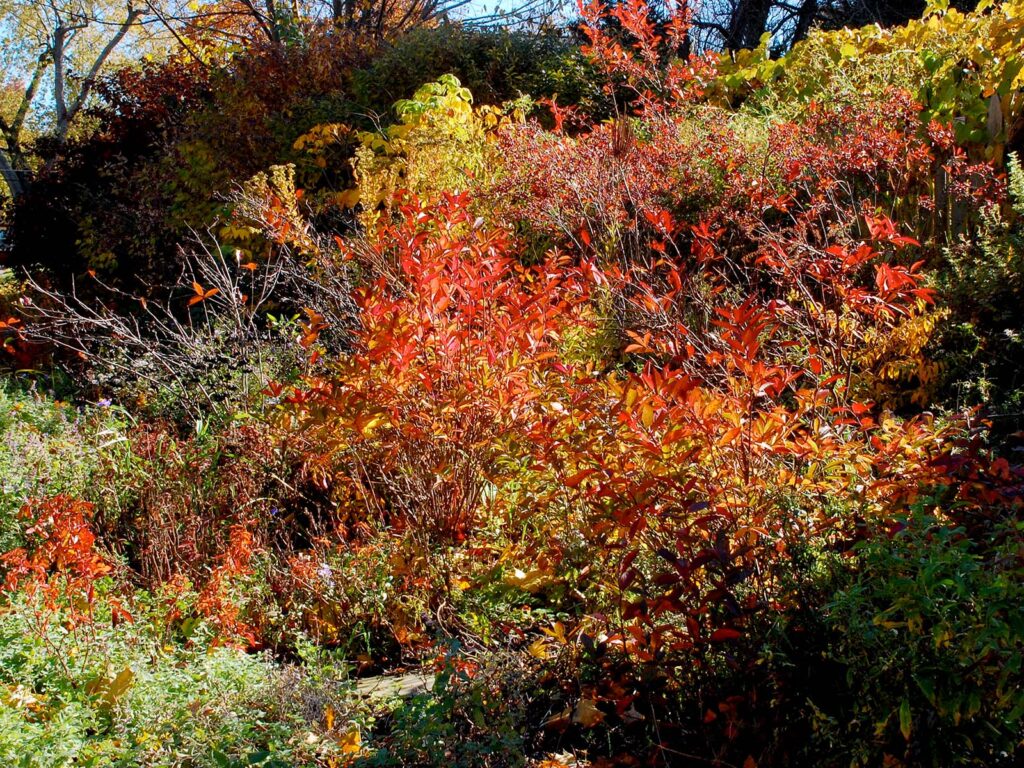
The hedgerow can be quite colorful in the fall with the sweetspire (Itea virginica), the red chokeberries (Aronia arbutifolia), the black chokeberries (A. melanocarpa), and others.
Resources
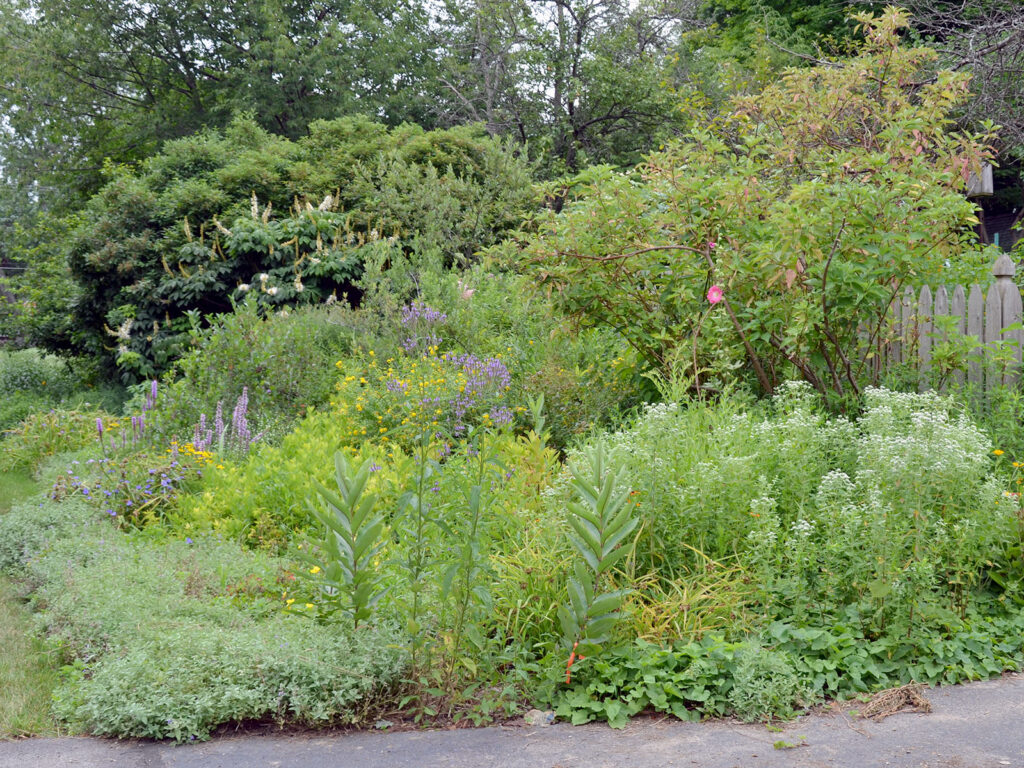
My habitat hedgerow was one of the hedgerow’s featured in The American Gardener May/June 2016 magazine’s article on Habitat Hedgerows!
- Ecological Landscape Alliance:
Reflections
Rising in an airplane higher than the clouds, cities shrink, highways narrow, and the land is unified. There are no lot lines from the sky, no state boundaries, not even clear distinctions among geographical areas whose names — Piedmont, Hill Country, High Sierra — are so distinct on paper. The type of vegetation changes smoothly, the way colors in a pointillist painting shift without hard edges. The land each of you owns is one dot among the millions that compose the painting of our country. Change the tone a bit and the painting changes. Change many dots and the shape of the future is transformed. That much I’m sure about, and I’m sure also of the necessity for change.
~ Sara Stein, Planting Noah’s Garden: Further Adventures in Backyard Ecology
People don’t think of the little land they tend as an ecosystem, but yards and gardens are a very particular and notably impoverished ecosystem that favors weediness in both plants and animals.
~ Sara Stein, Noah’s Garden: Restoring the Ecology of Our Own Back Yards, 1993, p. 12
